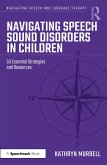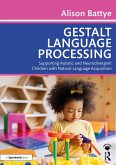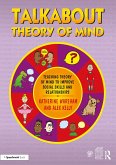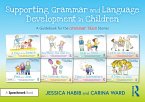The book focuses on key information, providing helpful therapy tips and evidence-based, practical advice drawing on clinical research and the author's extensive experience. Presented in 50 bite-sized chunks, therapists can find and refer to information quickly and easily. Additional guidance and links to further reading are signposted throughout so that the reader can explore topics in more detail, and a wealth of case examples is included to illustrate each point and demonstrate real-life application.
Written by a specialist in the field, this book provides strategies for students and qualified speech and language therapists (SALTs) working with children who present with many different types of SSD. It is valuable reading for both students and less experienced speech and language therapists, as well as seasoned clinicians.
Dieser Download kann aus rechtlichen Gründen nur mit Rechnungsadresse in A, B, BG, CY, CZ, D, DK, EW, E, FIN, F, GR, HR, H, IRL, I, LT, L, LR, M, NL, PL, P, R, S, SLO, SK ausgeliefert werden.









